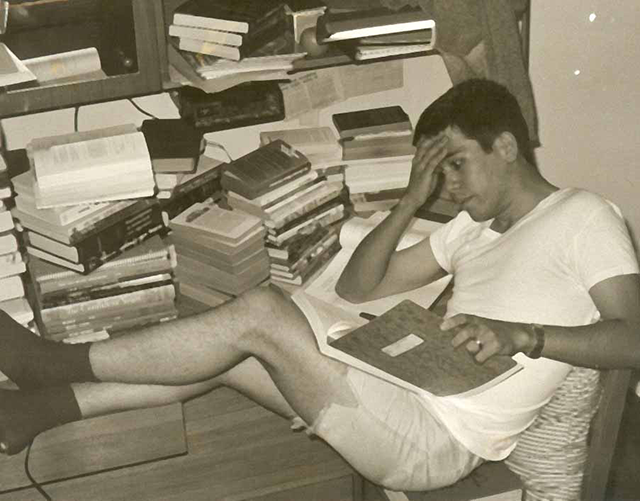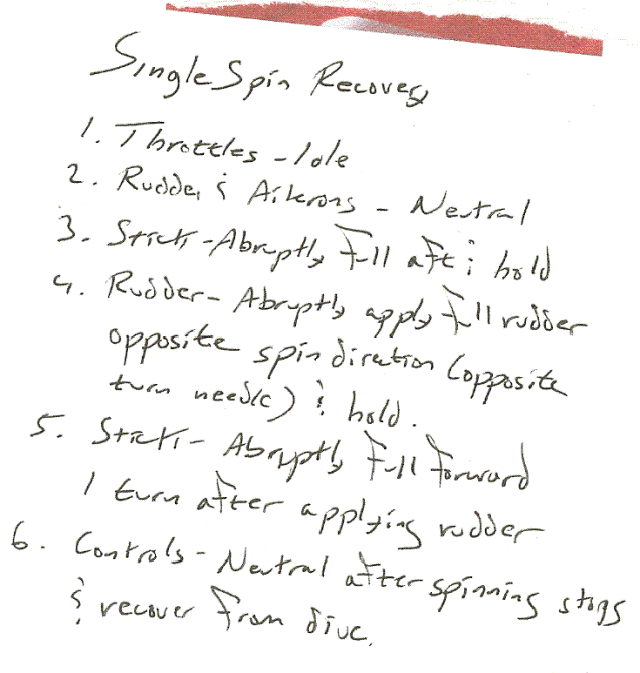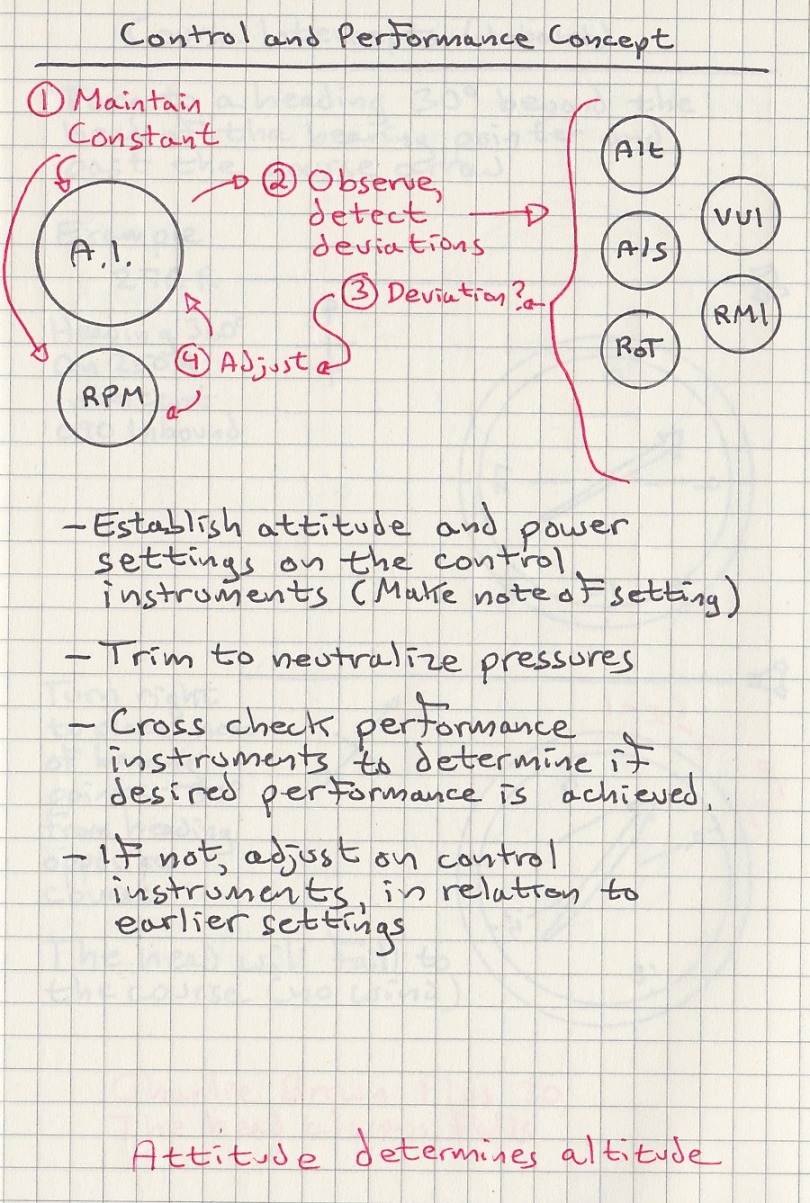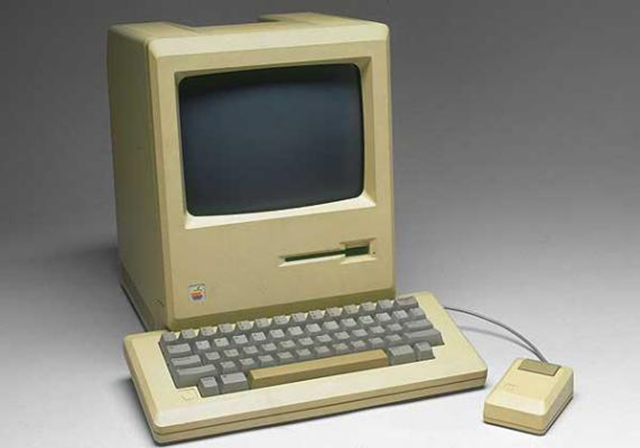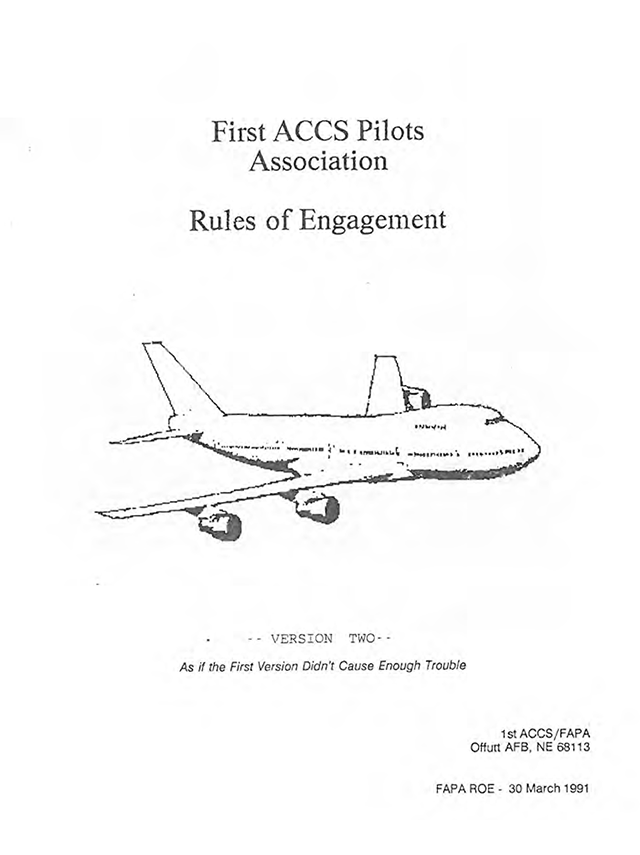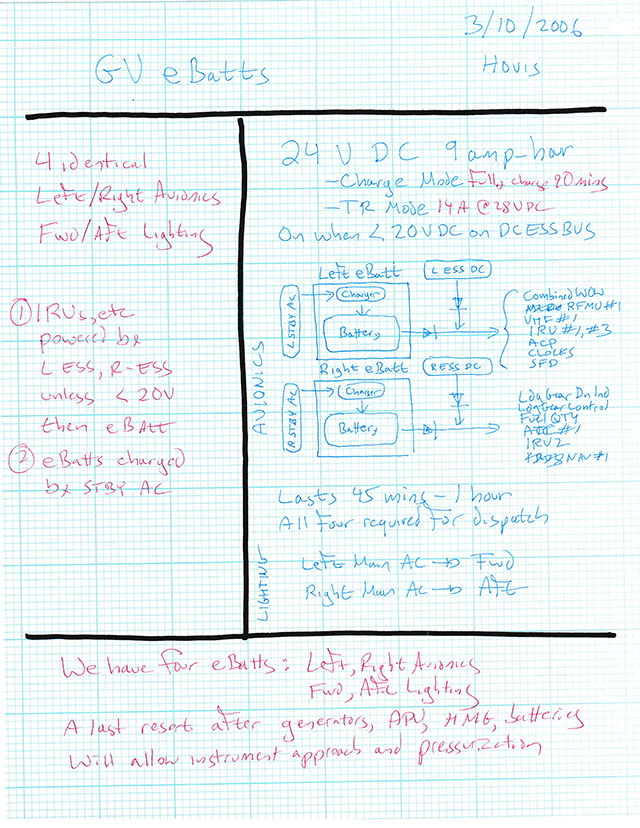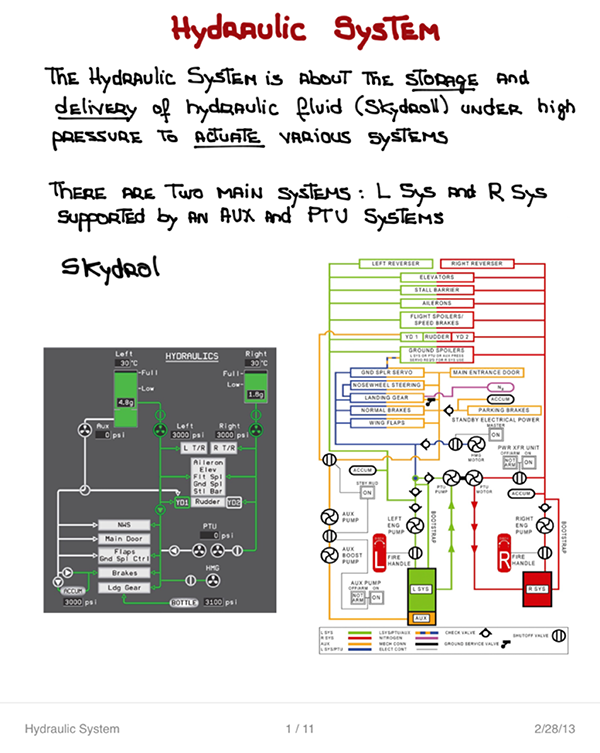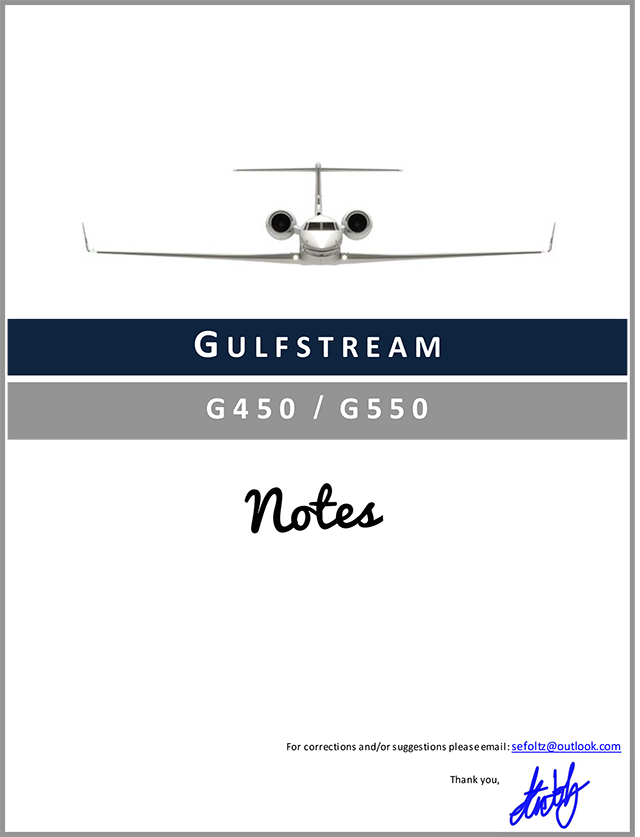You are a professional pilot and the subject of "note-taking" is years behind in your rear view mirror. Right? Not so fast.
— James Albright

Updated:
2022-12-05
I started collecting notes in earnest during Air Force pilot training in 1979 and tended to keep everything in various notebooks, tablets, and three-ring binders. I would lend these out liberally but now and then a lent note failed to come back. So as soon as I got a computer that was good for more than ones and zeros, I started putting things on disk. I think that is a valuable exercise for a pilot, and let me lead you through my history of computerized note taking to illustrate why.
But our story begins before the computer, it begins in 1974.
I was allowed to test out of several classes in Aiea High School, an institution known more for marijuana than matriculation, so I only had to attend part time for three semesters. This led me to believe I was above the need to study. I showed up at Purdue University and discovered just how wrong I was.
As is typical with most engineering students, I took notes using the mindless technique. I wrote things as quickly as I could during class, not applying any mind-power to what was happening at the moment of note taking. These notes tended to be pretty sloppy and, as a result, useless for later reference.
Do notes have to be neat? Sometimes. Sometimes? Yes, there is a time when very sloppy notes are useful. But I am getting ahead of myself.
1 — The single spin recovery — the value of writing when learning
2 — The control / performance technique — the value of formalized notes
3 — The Apple Macintosh — the value of notes you can edit
4 — The FAPA ROE — the value of distribution
5 — Cornell Notes — fast forward to today
6 — Master class — Ivan Luciani

1
The single spin recovery — the value of writing when learning
"The hand-brain interface"
Note taking serves two purposes. Yes, you can refer to the notes to remember something previously taught or to prompt further investigation. But there is another purpose: the very act of taking the note helps you to learn.
Learning the "Single Spin Recovery" in Air Force pilot training was one of those rituals that became a prerequisite to becoming a pilot. You had to memorize every word, every item of punctuation, and you had to recite it as quickly as you could fly it. If you failed, they kicked you out. Motivation enough, but how can you memorize such a long sequence of words quickly, faced with a mountain of other things that needed memorizing?
On January 3rd, 1979, my first Air Force ground school instructor had us turn to a page in our T-37 flight manual and read to us the T-37 Single Spin Recovery and then told us:
"There are 6 steps, 38 words, 6 dashes, and 4 ampersands in the Single Spin Recovery and you will memorize all of them in the correct order. You will write them down every day in your T-37 careers before you will be permitted to fly. You will be able to recite them in your sleep, again in the correct order with all 4 ampersands in the correct positions. Get them wrong in the airplane, and you could die."
The captain instructor pilot went on to teach us something that has proven to be true in every airplane I've ever flown since. I think it is the best way to memorize specifics. You might dispute his medical bona fides, but his method works.
"Gentlemen, there is a connection between your hands and the parts of your brain that learn. Scientists aren't sure why, but the act of writing as quickly as you possibly can will cement what you write into the deepest recesses of your brain. It doesn't matter if what you write is completely undecipherable. It is the actual act of writing that causes you to remember. So here is your first assignment. Sit down with a blank piece of paper and write out all 6 steps, 38 words, 6 dashes, and 4 ampersands as quickly as you can. Do it over and over again. You will find that pretty soon you have them memorized. Once you've got them down cold, repeat this at least daily to really cement them into your brains. You don't even have to read what you wrote. But write!"
And so it was. I had them down in just a few days.
2
The control / performance technique — the value of formalized notes
"Nailing down the concepts"
But what if you know you will need the notes for later reference? Neatness counts, of course. I still had reams of engineering graph paper from college and even outside the engineering classroom this paper helped tidy up what could have been another undecipherable mess.
When I wrote this note the concept of breaking down the four steps of the control and performance technique seemed strange and complicated. Within year it became second nature. But I was able to use the note years later when critiquing a pilot's instrument piloting performance during a check ride. Taking the time to carefully turn a sloppy note into a neater note also helps cement the information into your head.
3
The Apple Macintosh — the value of notes you can edit
"Enduring notes"
Soon I had dozens of notebooks filled with notes and I became reluctant to lend them out for fear of never getting them back. I started to handwrite duplicate copies but these were often lost as well. My first computer was a home built model that did a poor job of producing text. My second computer was little more than a word processor without any kind of graphical capability. The arrival of the Apple Macintosh changed everything.
Being able to type and draw notes in a form that could be later edited (corrected) was a game changer. I went to work preserving every surviving note I had into digital form. Here again I found that the physical act of typing and drawing was helping me to remember. I started to refer to the notes less and less, but found I had more and more requests for copies. These request had an added benefit, I felt pressure to make sure my notes were accurate.
4
The FAPA ROE — the value of distribution
"Notes for others improve the notes for you"
Our Boeing 747 squadron was known as the First ACCS and we thought it funny if we could actually have a pilot's union like ALPA. So we invented the First ACCS Pilot's Association, ALPA. It was an unsanctioned organization — you can't very well unionize military pilots, after all — with no leadership. So I took it upon myself to appoint myself as the President of FAPA. (See page two of the ROE.)
The job was fairly complex and the price of failure was high. Most pilots compiled pages and pages of notes to keep things straight. I did too, but I kept my notes on a 3-1/2" floppy drive. After I realized every pilot and navigator in the squadron wanted a copy, it seemed like a good idea to formalize everything.
After the first edition in 1989 the wing came out with an official letter saying the FAPA ROE was an unofficial document that crewmembers could use but only as if they were just notes of their own. ("The secretary will deny all knowledge . . .") I was asked, informally, to cease publication. I argued that pilots were using unvetted notes of their own and sometimes no notes at all. They saw it my way and allowed this second edition.
A squadron-mate gave me this copy, 25 years after I had written it. There is some humor inside the guide and I am sure nostalgia is playing a role too. But at the time writing the guide vastly reduced my need to use the guide.
5
Cornell Notes — fast forward to today
"A better way to take notes"
All those notes have evolved from the messy black and white dot matrix printing into the meat of www.code7700.com, so things have come a long way. But the actual process of taking the notes in the first place has changed for me too. I've gradually moved to a method known by the name "Cornell Notes."
I think the key to taking effective notes is leaving yourself a lot of room on the page, trying to understand before writing, and follow up. I later found out the method is called "Cornell Notes," developed by a college professor at Cornell in the 1950's. I didn't learn it until after college. But I did learn it:
- Draw an off center "I" on the page with the intent of having a small row on top and bottom, as well as a large row in the middle with more room to the right than left. I like keeping a Sharpee on hand for this purpose.
- Give the notes a topic title on top, add the date and instructor's name (or source of the material) too.
- Make your notes on the middle right, don't crowd yourself and draw pictures where helpful.
- After you've had a chance to digest the material and reference text books (AFMs, etc.), make notes on the left column and add to the right column if you think helpful, but do this in a different color. I like to do everything in ink so mistakes are crossed out and not erased.
- Give it a day or two, and then try to summarize everything on the bottom.
6
Master class — Ivan Luciani
The "art" of note-taking
You don't need a website to develop a following for your notes. Case in point: Ivan Luciani. I am a big fan of his unique style of notes and try to emulate them. (In other words: steal shamelessly from.)
Ivan uses the application Noteshelf, available here: www.noteshelf.net.
You can find Ivan's notes on the G450, G500, G550, G600, and G650 at: Code450.com, which covers all those Gulfstream aircraft.
7
Master class — Steven Foltz
A complete set of notes in one document
I am also a big fan of Steven Foltz's meticulous notes that have developed a unique following of their own.
I have walked into a number of FlightSafety initial and recurrent classrooms only to be greeted with one of Steven's note pages on a projector. In one case I was credited for the notes. No, not me.
Steven uses Microsoft Word for most of his note-taking, then saves everything to a PDF file for distribution in DropBox. I think his notes offer a true "master class" on how to write notes for yourself and others, and providing a feedback loop to make everything better. He provides an email address on the notes so readers can offer suggestions, corrections, and thanks. That allows him to make corrections and improvements and the notes only get better!
You can find Steven's notes on the G450 and G550 at: Code450.com.
8
Master class — www.code7700.com?
"one-stop" shopping?
You may be wondering about all the notes on www.code7700.com. It is true that I write most of them, but I don't write all of them. If you would like to write something for the website, please let me know, using the Contact Me page. There are a few rules, of course.
Guidelines for submission:
- References must be cited
- Opinions and personal techniques must be labeled as such
- No copyrighted material
- Readability required
- Graphic content encouraged
What about all those paper notebooks?
I gave a speech to a pilot's group once where they asked for a short video explaining the notetaking process. It ended up being a trick, they used the video to cut and paste an intro, which was much nicer than the video I produced. In any case, here is the video I sent in.
